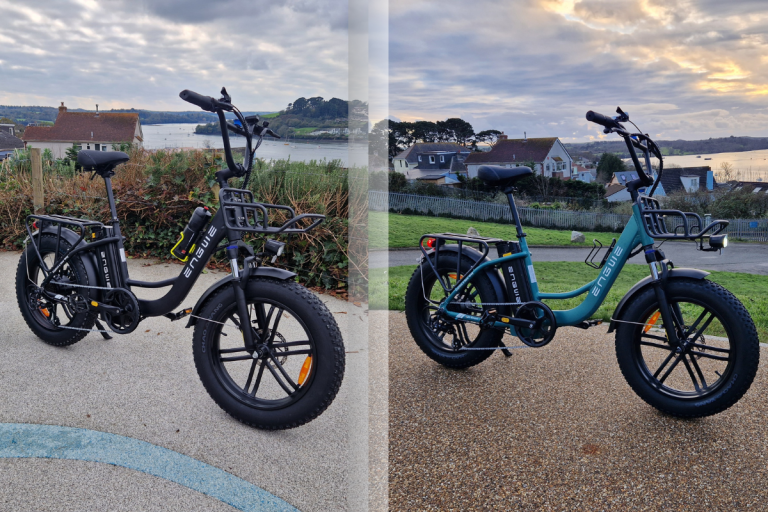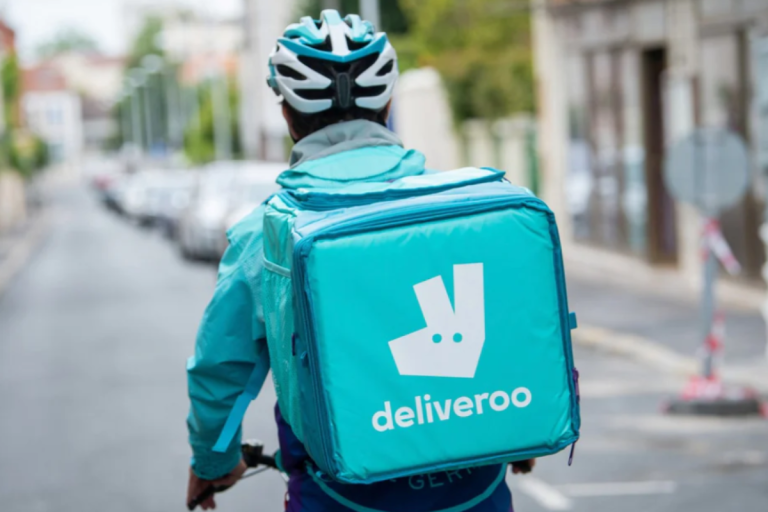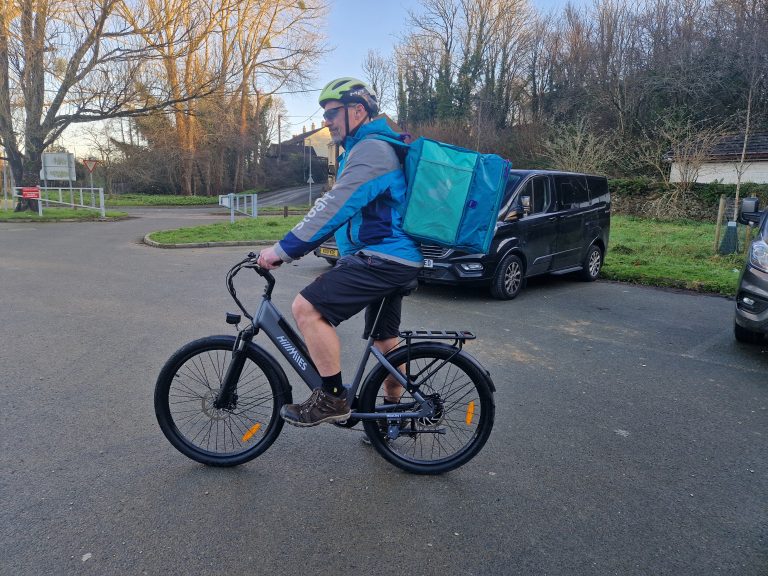Amazon Flex UK review: Is it worth the hassle?
In 2025, Amazon Flex is still a big draw for people looking for flexible work and a bit of extra cash. It’s one of those gig economy jobs where you’re your own boss, which suits plenty of folks, whether you’re juggling another job, studying, or just need something on the side. Here’s the lowdown on what it’s like to work for Amazon Flex, based on what drivers are saying and what I’ve experienced myself.
The Basics of Amazon Flex
Amazon Flex is pretty straightforward. You deliver parcels using your own car or van, and it’s all managed through an app. You pick delivery blocks, usually three or four hours long, head to the depot to load up, and then drop parcels off to people’s homes or businesses.
The big selling point is the flexibility. You pick when and where you work, so it’s a solid option for people who need to fit work around other commitments. Whether you’re a student, a retiree, or just someone who likes working when it suits you, it’s a decent gig for flexibility alone.
Getting Started: The Amazon Flex Application Process
Getting started with Amazon Flex is pretty straightforward, but there are a few boxes to tick before you can hit the road. Here’s what you’ll need to get through the application process:
- The Basics: You’ll need to be at least 18 years old and have a valid UK driving licence. A reliable vehicle is essential, and it’s got to be big enough to fit parcels—most people use a car, but vans work too if you’re up for larger loads.
- Insurance: You’ll need “hire and reward” insurance to legally carry parcels. This isn’t the same as standard car insurance, and it can be pricey if you go through traditional brokers. However, Amazon offers a bolt-on policy through a third-party company called Inshur, which attaches to your existing car insurance and tends to be more cost-effective — I’ve tried it myself and found it to be a decent option.
- Background Checks: Amazon requires a background check to ensure you’ve got a clean criminal record. It’s done through a third party and can take a week or so to come back.
- Smartphone: The whole job runs through the Amazon Flex app, so you’ll need a compatible smartphone. Both iPhones and Androids work, but make sure yours isn’t ancient and can handle the app without freezing up.
- Bank Account: Payments are sent directly to your bank account, so you’ll need one ready to go for your earnings.
Once you’ve got all that sorted, the application process involves filling in some forms, uploading your documents, and waiting for approval. It’s not the quickest process, but once you’re in, you can start booking blocks and earning straight away.

Real-World Earnings: A Bit Hit and Miss
Pay is always a hot topic when it comes to Amazon Flex. They advertise £13–£17 an hour, but how much you actually take home can vary massively.
- Block Pay Rates: The way blocks are priced isn’t always clear. Amazon uses an algorithm to work out pay, so some blocks pay better than others, even if they seem like the same amount of work. Drivers often grumble that the easier blocks sometimes pay more than the tough ones.
- Expenses: Since you’re self-employed, all the costs fall on you—fuel, insurance, servicing, road tax, the lot. With fuel prices still climbing, it’s not unusual for your net earnings to take a hit. If you’re not keeping tabs on your expenses, it’s easy to underestimate how much this eats into your pay.
- Earnings in Practice: For me, I’ve found my average to be about £13.50 an hour after expenses, but it really depends on the block. City centre routes can be slower and more stressful, while suburban areas are much quicker to get through.
The Day-to-Day Challenges
Like anything, working for Amazon Flex has its downsides. Here are a few of the main ones drivers mention:
- Tight Schedules: The app gives you an estimated time for each block, but it doesn’t always factor in things like traffic or dodgy parking situations. You can feel under pressure to rush to stay on track, which can be stressful.
- Customer Issues: Not every delivery is straightforward. Some addresses are poorly marked, others are flats with tricky access, and you’ll often get instructions like, “deliver to greenhouse” when the gate to the back garden is locked. It all adds up to extra hassle.
- Parcel Volume and Size: Sometimes you’ll get lucky with a block of small, lightweight parcels. Other times, especially during the holidays, you’re lugging around heavy. It’s potluck, and the app doesn’t give you much of a heads-up.
- Limited Support: If you run into issues, like not being able to deliver a package or getting stuck, Amazon’s driver support line isn’t always that helpful. A lot of the time, you’re left to figure it out on your own.
- Poor App Navigation: This is a big one, especially on rural routes. The Amazon Flex app uses a built-in navigation system that often tries to take you down completely unsuitable routes — including bridleways, private farm tracks, and even byways where motor vehicles aren’t legally allowed. It’s not just frustrating — it’s dangerous and, in some cases, illegal. Frankly, it’s something Amazon needs to sort out as a matter of urgency.
Why Some People Love It
Despite the challenges, there are good reasons people stick with Amazon Flex:
- Independence: You’re your own boss. No one’s breathing down your neck, and as long as you get the job done, you can crack on as you like.
- Flexibility: Being able to pick and choose your shifts is a huge plus. If you’ve got other responsibilities or commitments, this kind of freedom can’t be overstated.
- No Long-Term Ties: There’s no commitment. You can take or leave blocks when you choose. If you have something else on, it won’t matter if you don’t do Flex for a while.
- Extra Cash: If you’re just looking for some side income, it’s a decent way to bring in a bit of money in your spare time.
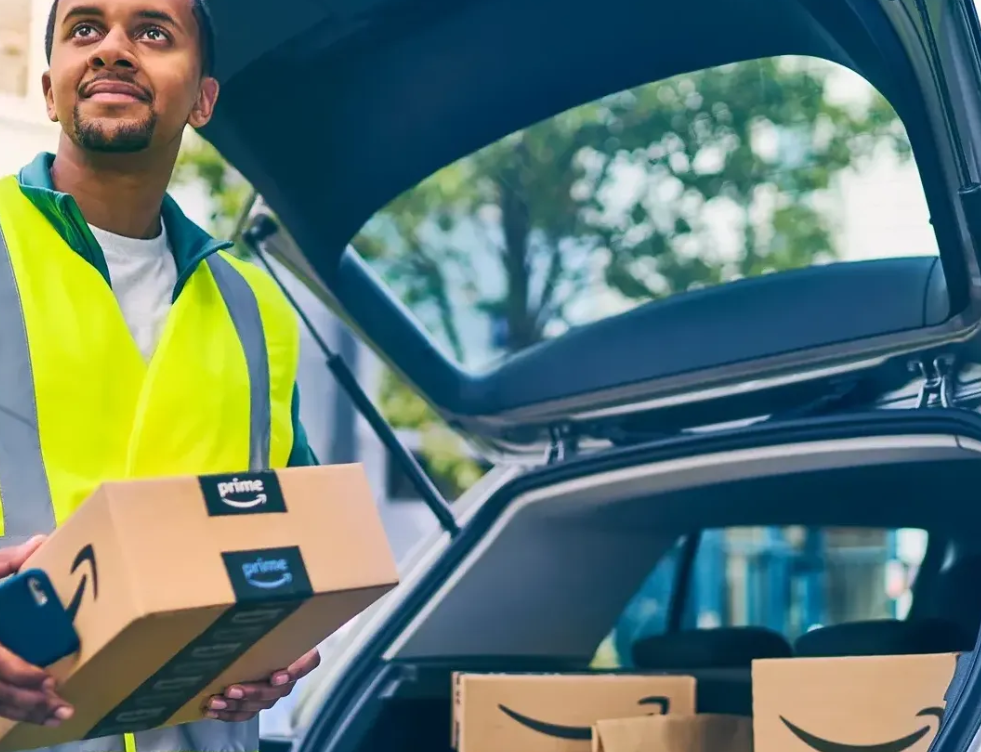
My Personal Experience with Amazon Flex in the UK (2025
Working for Amazon Flex can be a real mixed bag. Some days it’s easy money, and other days it’s a proper slog. If you’re looking for something flexible to bring in a bit of extra cash, it’s worth considering, but don’t expect it to be a walk in the park. Here’s how it’s been for me.
My local Amazon Flex depot is in Plymouth, and you’re occasionally sent out to rural locations like Dartmoor, where the roads are little more than rough farm tracks. If you’re using a regular family car, expect a lot of wear and tear (more on that later).
The type of delivery block you get with Amazon Flex is pure luck — it all depends on where the demand is at your local depot at the time. Some of the time, you’ll be delivering Amazon Prime same-day parcels, but the actual route you end up on can vary wildly.
Some blocks are an absolute doddle — especially those in suburban estates close to the depot. I’ve had 4-hour blocks with around 45 stops that only took me 2.5 hours to finish. Easy parking, clear addresses, and parcels that are quick to drop off. Jobs like that push your hourly rate right up.
City centre blocks are a different story. You might have fewer stops, but they’re often in blocks of flats with multiple deliveries at a single location. I once had one stop with 10 separate deliveries — all needing to be scanned and left in different locations within the same building. Parking’s usually a nightmare, and you’ll find yourself running up and down stairs or waiting around to get buzzed in. These blocks often take longer and are far more stressful, yet they can pay the same — or even less—than the easier suburban runs.
Then there’s the issue of parking. On city centre blocks, you’ve constantly got to worry about getting a parking ticket. There’s not always a safe or legal space to stop — no loading bays, double yellows everywhere, high-traffic roads where you simply can’t pull over, and private flats with ANPR cameras ready to slap you with a fine. Some loading bays are strictly for commercial vehicles only, and traffic wardens in busy areas don’t tend to show much leniency. The stress of trying to avoid a ticket just adds to the pressure.
As there’s no way to choose your route in advance, and no way of knowing what kind of block you’ll get, it’s a case of lucky dip.
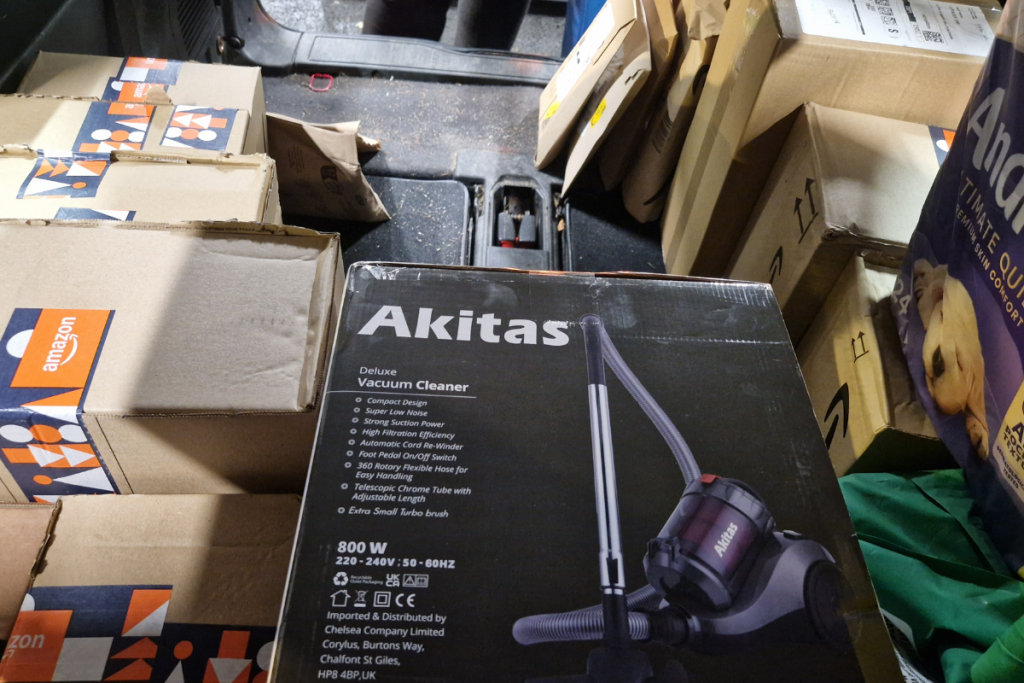
Block Pay Breakdown
Pay with Amazon Flex is all over the place, and what you earn depends heavily on block duration, time of year, and demand at your local depot. Here’s a more realistic look at what to expect:
4-Hour Blocks (Typical Pay: £62)
These usually seem to be in the morning, starting between 7.30 am – 8 am. In my area, £62 is the going rate — though during busy periods like Christmas, I’ve earned up to £96 for a 4-hour block, thanks to surge pricing when demand spikes.
3.5-Hour Blocks (Typical Pay: £54.50)
These look good on paper, but they’re often misleading. In my experience, 3.5-hour blocks can take just as long — if not longer — than a standard 4-hour block. You’re being paid slightly less for what’s often the same workload.
3-Hour Blocks (Typical Pay: £48–£60)
I’m not sure if it’s timing, but I get a lot of high-mileage rural routes when I take a 3-hour block (in my area). They might only have around 25 stops, but include lots of driving down rough country lanes and isolated addresses. You’ll sometimes get paid up to £60 in surge times, but more often than not, these blocks are time-consuming, less profitable and increase wear and tear on your vehicle. Occasionally you’ll get a good one, but in my experience, they’re the exception.
2.5-Hour Blocks (Typical Pay: £39)
Honestly, I avoid these where I can. They usually involve poor routes, long distances, and awkward stops, and rarely take less than 2 hours to complete. I can sometimes finish a 4-hour block quicker than some of these so-called 2.5-hour ones. At £39, it feels like Amazon are taking the proverbial. You’re better off holding out for something better if you’ve got the flexibility.
Fuel, Vehicle Costs & Realistic Profit
I started off using our family car — a Vauxhall Zafira 1.6 petrol — which averages about 30 mpg, so fuel costs quickly ate into earnings, especially on longer rural routes. But the real issue came at MOT time. After my first year of doing Flex, the car failed its MOT, and the repair bill came to nearly £1,000 — including a power steering pump, ball joints, CV joint, and two new tyres. We’ve had the car for six years and it’s never needed that much work before. On top of that, it’s picked up some battle scars along the way — scuffed bumpers, scrapes, and wear from constant speed bumps and rough lanes. Our once clean and tidy low-mileage family car started to look a bit rough around the edges.
That’s when I decided to buy an older Peugeot van, and honestly, it’s been a game-changer. Being a diesel, it’s far better on fuel, it handles the rough roads much better, and I don’t have to worry about the odd knock or scratch. Using a dedicated work vehicle just makes more sense in the long run. If you’re planning on doing Flex regularly, I’d think twice before using your main family car — it’ll cost you in the end.
Loading Up and Staying Organised
When you arrive at the depot, things are usually straightforward:
- Show your photo ID at the gate.
- Hazard lights on, and wait for instructions.
- You’re assigned a cage filled with coloured tote bags containing your parcels.
- Scan the route code on the cage, then load your vehicle.
Officially, you’re meant to scan every parcel individually, but I tend to scan the bags instead — it’s quicker and works fine, though not everyone does it this way. Keeping your boot organised by bag makes a big difference once you’re out delivering, especially when you’re under time pressure.
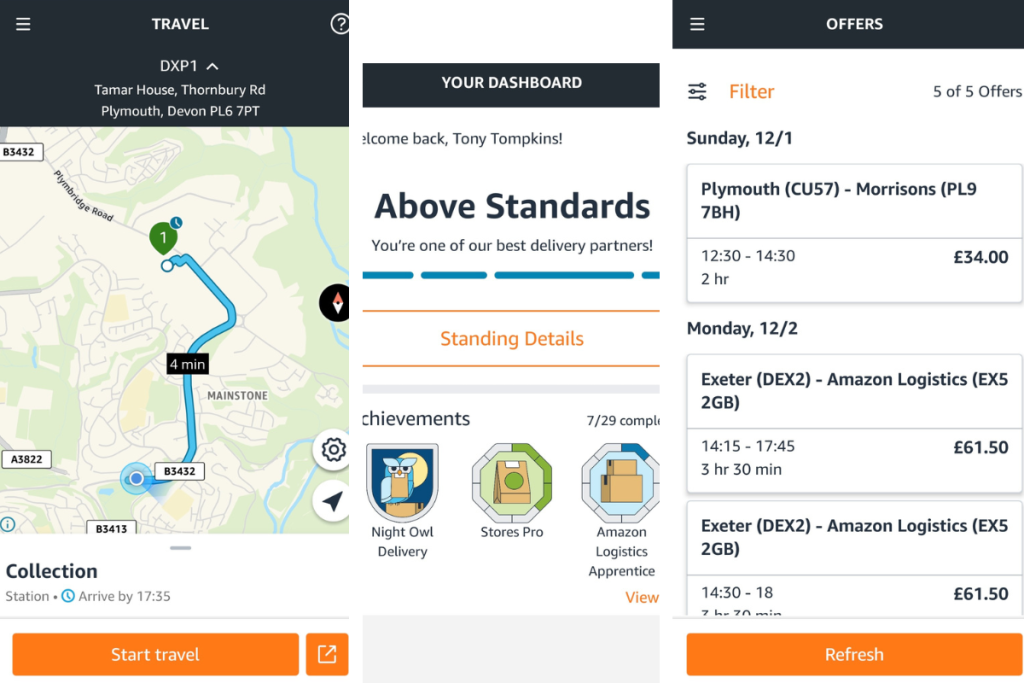
Using the Amazon Flex App
The Amazon Flex app is central to the whole job — everything from navigation and parcel scanning to checking in at the depot and marking deliveries complete is done through it. While it’s mostly functional, it has its quirks.
Navigation Issues
One of the biggest problems is the built-in navigation, especially when you’re out on rural routes. It often tries to shave off time by taking you the so-called “shortest” route, which can mean dirt tracks, bridleways, and narrow farm lanes. I’ve had it try to take me down roads that are obviously prohibited for vehicles, even where signs say no entry or no right turn. It’s not only frustrating — it can be downright dangerous if you’re not paying close attention. Bottom line: never trust the route blindly — always use your judgement, and don’t be afraid to take a longer but safer way round.
General Workflow & Performance
The delivery workflow itself is fairly straightforward. You scan parcels, get directions, deliver, and mark it as complete. The geolocation system usually puts you in the right place, and although it does get it wrong now and again, it’s generally decent. The app can lag a bit, and sometimes won’t orientate properly until you start moving — which can lead to you missing a turn and having to do a U-turn. Not a big deal in a housing estate, but a real pain in a busy city centre or rural single-track lane.
A Handy Tip: Notify on Arrival
One feature I always recommend using is “Notify of Arrival”. Yes, it adds a bit of extra faff, but it can help reduce the number of concessions — especially if you’re leaving the parcel in a safe place. It logs that you’ve arrived and alerts the customer, which can make them more likely to answer the door. In my experience, this sometimes speeds up the whole process, especially if someone is waiting for you and opens the door as you walk up. It’s a small step that can save time and hassle in the long run.
Amazon Fresh & Morrisons Blocks: What to Expect
If you pick up a block for Amazon Fresh or Morrisons, be prepared — these runs are in a league of their own. It’s not just a few parcels in the boot; you’re looking at trolleys loaded with bags, often full of 2-litre fizzy drinks, milk bottles, and bulky groceries. These aren’t light jobs, and if you’re doing them regularly, I’d seriously recommend investing in a decent fold-up trolley to help — especially when you’re dealing with steps, long driveways, or flats with no lifts.
The worst delivery I’ve ever had was 17 heavy bags, all destined for a second-floor flat. No lift, four flights of stairs, and to make it worse, I couldn’t even park close to the entrance — I had to lug the lot an extra 50 metres on foot. It took me nearly half an hour just to complete that one delivery, and by the end of it, I was absolutely knackered.
One thing to be aware of: a lot of disabled and elderly customers rely on these deliveries. That means you’re often left to carry everything to the door (or upstairs) without any help — and while you occasionally get a tip, it’s not something you can rely on.
Vehicle Size & Loading Area
If you’re doing Fresh or Morrisons runs, a larger vehicle is a must. You’ll often be dealing with 35–40 large, heavy bags, and trying to cram that into a small hatchback just isn’t practical. I’ve seen other drivers struggle trying to make it work, and it just adds unnecessary stress.
The loading area at my local Morrisons can be chaotic. Multiple drivers turning up at once, all trying to load at the same time, and the space quickly turns into a free-for-all. Sometimes you arrive and the staff are still loading the racks, so you’re stuck waiting — and I’ve even been told not to park in the Click & Collect bays, even though they’re the closest to the loading area. The shopping trolleys aren’t really suitable for moving that many heavy bags, especially if you’re trying to load your van without everything toppling over.
Mileage & Profit
Fresh blocks sometimes involve rural delivery routes, and although the official pay might look alright (e.g. £37 for a 2-hour block), once you factor in fuel — which could easily be £10 or more on a long run — you start to realise how slim the actual profits are. Add in the physical toll, long driveways, poor access, and heavy lifting, and it’s clear these jobs aren’t always worth it, especially if you’re in it for efficiency and earnings.
More Opportunities
One thing to watch out for: if you finish your block with more than 30 minutes remaining, you’ll often get the cheery message — “Please head back to the delivery station for more opportunities.” In reality, this means driving all the way back and waiting out the remainder of your shift, even if you’ve finished your deliveries.
Sometimes I’ve had only four drops and wrapped up in 45 minutes — fair enough. But on other occasions, I’ve been 15 miles away, heading in the opposite direction from home, with just over 30 minutes left. If you’re close to that cut-off, it’s often smarter to pull over for a quick break rather than race back unnecessarily.
In my case, I’ve got a toll bridge nearby that costs £3 and Morrisons is 10 miles away — it’s just not worth it. For what Amazon pays per block, expecting drivers to double back for the sake of a few minutes is unreasonable.
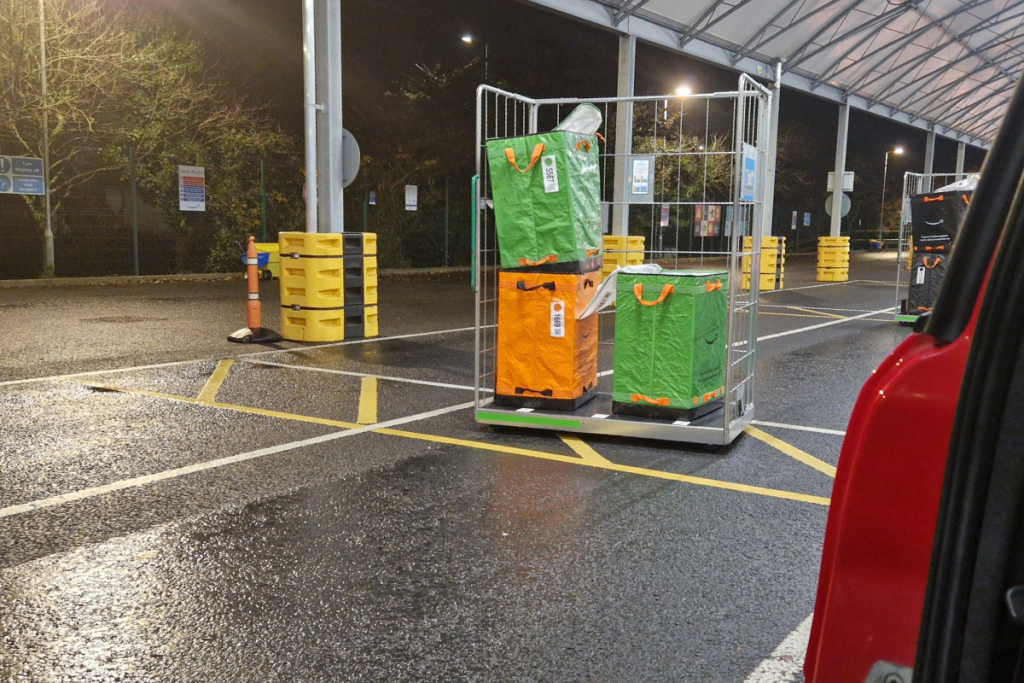
What Do I Think Of Amazon Flex So Far?
For me, Amazon Flex has been a decent side gig, but I wouldn’t rely on it as my main job. The inconsistency in pay and block availability makes it too unpredictable. If you’re also signed up with other gig apps like Deliveroo or Uber Eats, you can fill in the gaps and keep busy throughout the day, but you’ll need to plan your timings carefully. If you’re looking for more regular work, it might be worth signing up as a full-time Amazon DSP delivery driver.
All in all, it’s alright for a bit of extra money, but it’s not as easy as it looks. The key is to go in with your eyes open, be prepared for the tough blocks, and make sure you’ve factored in all your expenses. If you’ve got a decent car, some patience, and a bit of hustle, you can make it work. Just don’t expect it to be all smooth sailing.
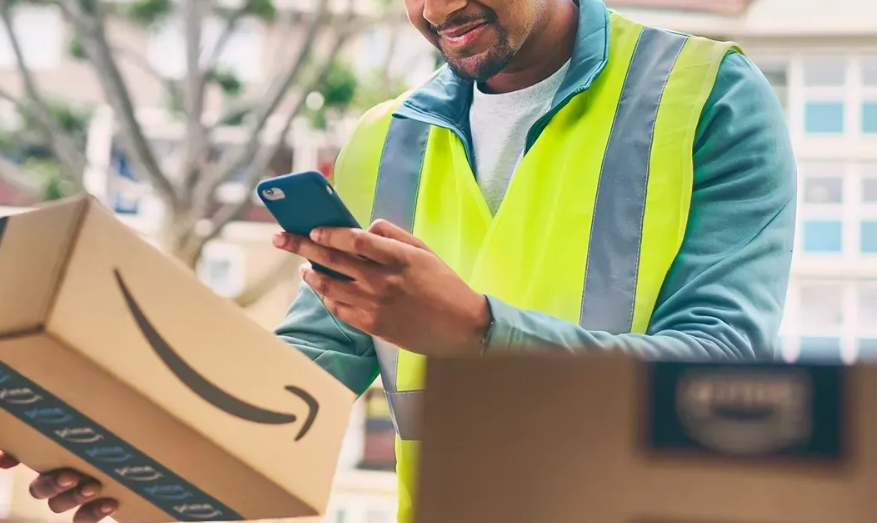
Alternatives to Amazon Flex in the UK
If Amazon Flex isn’t quite ticking all the boxes, don’t worry—there are plenty of other delivery jobs out there that might suit you better. Here are some popular alternatives worth checking out:
- Deliveroo: If you don’t mind ferrying food instead of parcels, Deliveroo is a good option. You’ll need a bike, scooter, or car, and you can pick shifts or go online whenever you’re free. Pay can vary, but during busy meal times, you might earn more than Amazon Flex—plus, you often get tips from customers.
- Uber Eats: Similar to Deliveroo, Uber Eats has you delivering takeaways, but you work entirely on-demand—no pre-booked shifts. It’s great if you want complete flexibility, though pay rates depend on how busy it is and the distance of each delivery.
- Stuart Delivery: Stuart partners with businesses like Tesco and some takeaways like Papa Johns, so you’ll deliver anything from groceries to takeaways. It’s app-based, like Flex, and you can choose your working hours. Rates are competitive, and the variety of deliveries keeps it interesting.
- Evri: If parcel delivery is more your thing but you want a regular route, Evri could be a good shout. You’ll need to commit to a set delivery area and work most days, but it’s a bit more predictable than Flex.
- Gophr: Gophr focuses on courier work, so you might deliver anything from documents to larger items. They’re known for fair pay and clear rates, and you can choose jobs that suit your vehicle size and availability.
- CitySprint: CitySprint specialises in same-day courier services and offers flexible work for self-employed drivers. You don’t necessarily need a van and can use a car. You’ll handle a range of deliveries, from urgent documents to large parcels, and the pay is typically better for bigger or time-critical jobs. It’s a good option if you’re after variety and don’t mind a bit of a hustle to pick up and deliver quickly. Find out more about how to start a courier business in the UK.
If you want to maximise your earnings, it’s worth signing up for a few platforms and juggling work between them. For example, you could fit food deliveries between Amazon blocks or switch to another app when Flex is quiet. It takes a bit of planning, but it’s a good way to keep busy and bring in more cash.
Is Amazon Flex Worth It in 2025?
Based on my personal experiences, I think Amazon Flex is one of the best delivery side hustles there is. That said, it’s not perfect. Rising fuel costs and the unpredictable nature of the blocks mean it might not suit everyone. If you need a steady, reliable income, it’s probably not for you. But if you’re after something part-time, where you can set your own hours, it’s worth a look.
At the end of the day, how well you do with Amazon Flex depends on your circumstances. Where you’re delivering, what kind of car you’ve got, and how well you can deal with the odd headache all make a difference. Go in with realistic expectations, and it can be a handy little earner, but don’t expect it to be an easy ride.


